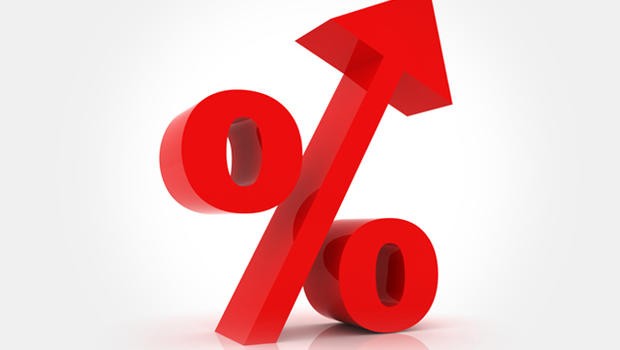How rising interest rates affect stock returns CBS News
Post on: 28 Май, 2015 No Comment

(MoneyWatch) We can define conventional wisdom as ideas that have become so ingrained in how people think that few ever question them. But millions believing in an idea — that the earth is flat, for instance — doesn’t make it true.
Likewise, much of the conventional wisdom about investing — such as active investing wins in bear markets, and active investing wins in inefficient markets like small caps or emerging markets — is wrong.
Among the many other conventional investment ideas that are wrong is that rising interest rates are bad for stock returns. Today, because of the Federal Reserve’s low interest rate policies and quantitative easing (bond buying), many investors are concerned that interest rates will rise and damage the stock market. Many supposed financial gurus also have been warning about the damage that will be done to stocks when the Fed begins to taper its $85 billion a month bond-buying program and eventually unwinds its balance sheet.
But is that really true? It’s one of the questions I get asked the most.
Before answering, it’s worth briefly reviewing what has happened in the financial markets this year. Interest rates bottomed out on around May 1. with the 10-year Treasury note yielding just 1.66 percent. As of Nov. 11, the yield had risen to 2.75 percent. How did stocks do in this period? The S&P 500 rose from 1,583 on May 1 to close at 1,772 on Monday. Even excluding dividends, that’s a gain of almost 12 percent. And when the Labor Department reported Friday that the economy performed much better last month than forecasters had expected and added 204,000 jobs, the yield on the 10-year bond jumped from 2.63 percent to 2.77 percent. In response, the Dow Jones industrial average defied the interest rate gods and rose almost 168 points.
Impact of rising interest rates
In assessing the impact of rising rates on stocks, it is essential to first recognize that markets are forward-looking, incorporating all that is knowable about the market into current prices. Thus, surprises determine much of future returns. And because happy surprises are just as likely as unhappy ones, market prices move randomly.
With that in mind it’s important to understand that if you know something about the market (such as that interest rates are likely to rise), you can be sure the sophisticated institutional investors that dominate trading, and therefore set prices, are also aware of that information. All we need to do is look at the current yield curve to see that the market is already expecting interest rates to rise significantly — the current Fed Funds rate is at zero, and the 10-year Treasury note at about 2.75 percent.
If we were to make a simplifying assumption that the Fed Funds rate will rise at a constant rate over the next 10 years, the market is telling us that in 10 years the rate rate will be 5.5 percent. Thus, it’s only if rates rise faster than already expected that the bond market and the stock market might be negatively impacted. Additionally, it matters a great deal why rates are rising. If rates are rising because the economy is gaining strength, that should not only lead to greater corporate earnings, but it could also lead to a reduction in the risk premium demanded for investing in stocks. That would increase price/earnings ratios. The Fed has made clear that it will scale back its bond purchases only if the economy is strengthening sufficiently to continue to lower unemployment.
Many happy returns
Let’s take a look at some historical evidence how markets have performed during periods of rising rates. Thanks to analysis from Rob Brown, chief investment strategist for United Capital Financial Advisors, we have data to answer this question. Brown examined stock market returns during periods of economic expansion when interest rates rose the most. Specifically, he restricted the analysis to periods when the U.S. economy was not experiencing an economic recession.
Since 1865, we have experienced 30 economic expansions, not including the current period of growth. The shortest of these expansionary phases lasted 10 months. For this reason, he selected the 10-month window within each growth period during which interest rates rose the most, and he used the yield on the 10-year constant-maturity U.S. Treasury bond. Brown found:
- The median return for all 10-month windows when interest rates rose the most was 7.9 percent, compared to the median of all possible 10-month windows of 8.9 percent.
Brown found similar results when he looked at more recent data. Based on the data, it’s hard to conclude that rising interest rate environments are bad for stocks, demonstrating once again that much of the conventional wisdom about investing is wrong.
Image courtesy of Flickr user 401(k) 2013
2013 CBS Interactive Inc. All Rights Reserved.














